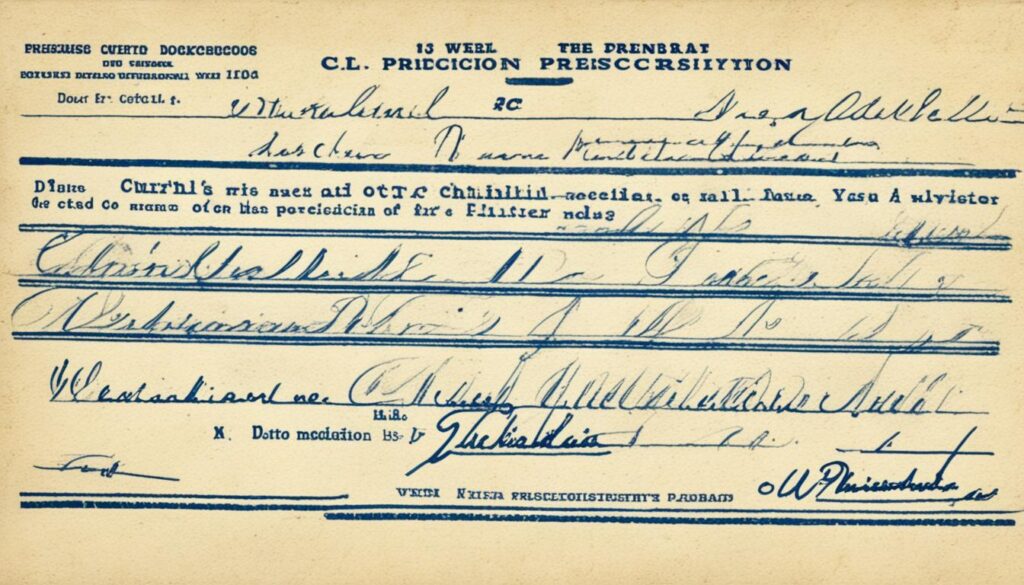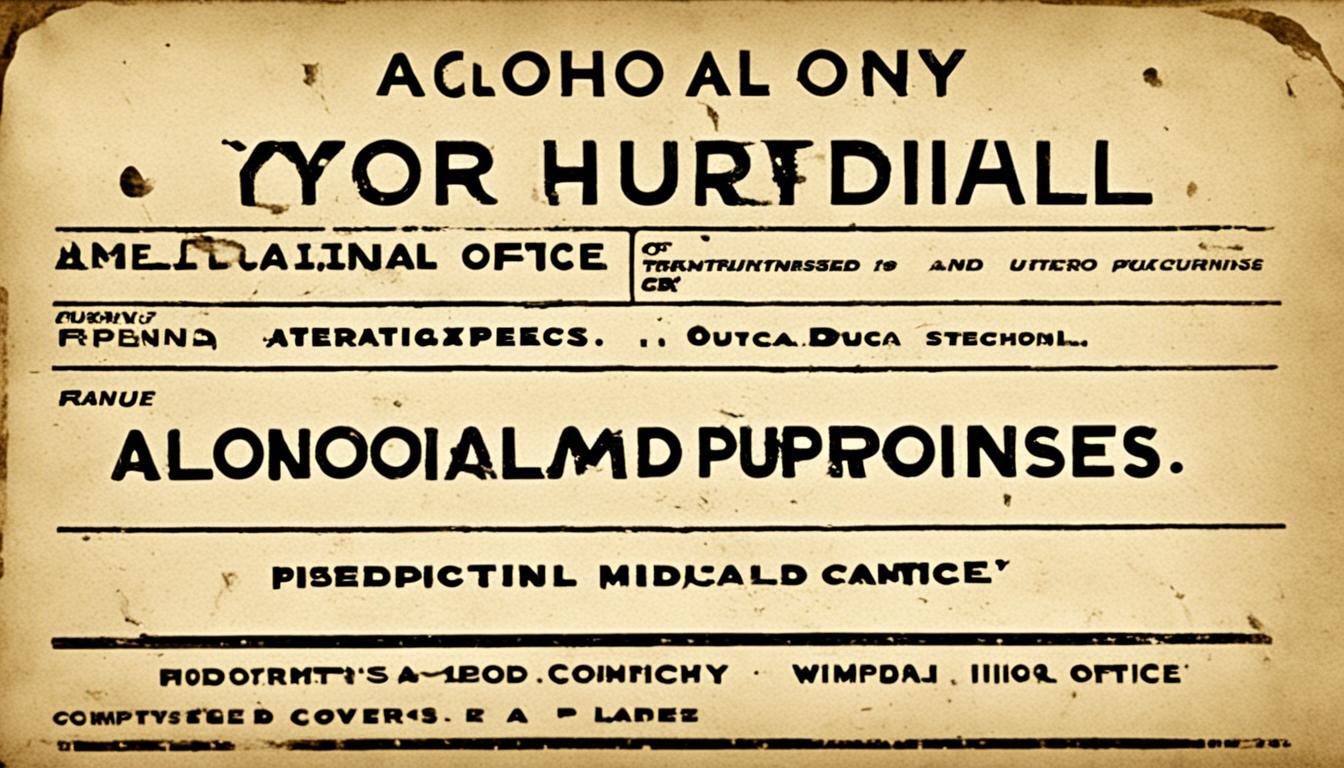Winston Churchill’s 1931 US lecture tour took an unexpected turn. In New York City, he was hit by a car crossing 5th Avenue. The accident left him with severe injuries and a deep head gash.
Churchill spent two weeks in the hospital recovering. Afterward, he and his family sought rest in the Bahamas. To continue his tour, Churchill needed a unique medical solution.
Dr. Otto Pickhardt, his physician, provided an unusual medical note. It allowed Churchill to use alcohol during Prohibition. The note stated that alcohol was necessary for his recovery, especially at mealtimes.
The prescription set a minimum of 250 cubic centimeters. This unusual directive became a historical curiosity. It shows Churchill’s determination to continue his tour despite Prohibition’s challenges.
Key Takeaways:
- Winston Churchill suffered severe injuries after being hit by a car in New York City during his 1931 US lecture tour
- Dr. Otto Pickhardt issued Churchill a medical note allowing alcohol use during Prohibition to aid his recovery
- The doctor’s note prescribed a minimum of 250 cubic centimeters of alcohol, especially at meal times
- Churchill’s alcohol prescription became a historical curiosity, highlighting the challenges of his recovery during Prohibition
- Despite his injuries and the limitations of Prohibition, Churchill was determined to continue his American lecture tour
Winston Churchill’s Brush with Death in New York City
Winston Churchill faced a dangerous situation in New York City in December 1931. He rushed out of a cab on 5th Avenue, running late for dinner. Churchill looked left, forgetting about America’s different traffic flow.
A car going 35 mph hit Churchill from the right. The car accident caused serious injuries, including a head gash and broken bones. People nearby quickly took him to Lenox Hill Hospital.
At the hospital, Churchill introduced himself as “Winston Churchill, a British Statesman.” Doctors quickly treated his injuries. Despite the accident’s severity, Churchill kept his famous wit throughout.
Churchill’s hospitalization lasted two weeks. He had to recover from his wounds and deal with pleurisy. This extra illness made his stay in New York City even longer and more challenging.
Dr. Otto Pickhardt’s Prescription for Churchill’s Recovery
Dr. Otto C. Pickhardt treated Winston Churchill after his car accident in New York City. Pickhardt admired Churchill and kept in touch for years. To help Churchill recover and continue his tour, Pickhardt wrote a special medical prescription.

The prescription allowed Churchill to use alcohol during Prohibition. It stated that Churchill needed alcohol, especially with meals. The minimum amount was 250 cubic centimeters.
This note let Churchill legally get and drink alcohol when it was banned. It showed Pickhardt’s understanding of Churchill’s needs and his willingness to help.
The prescription became a symbol of their bond and Churchill’s determination. It highlighted Churchill’s strength to keep working after the accident.
Dr. Otto Pickhardt’s medical prescription for alcohol is now a fascinating piece of history. It shows the unique situation during Churchill’s US visit in the Prohibition era.
Churchill’s Prohibition Alcohol Note: A Historical Curiosity
Winston Churchill’s medical note for alcohol during Prohibition is a famous historical document. Dr. Otto Pickhardt issued it in January 1932. It shows how people cleverly bypassed Prohibition laws with help from some doctors.
The U.S. Treasury Department allowed doctors to prescribe alcohol for “medicinal” reasons. This created a profitable loophole for physicians and pharmacists. Churchill’s note demonstrates how people obtained alcohol despite strict laws.
Churchill’s alcohol prescription has become more than just a personal document. It symbolizes his resilience and the oddities of Prohibition. The note highlights the era’s challenges and contradictions.
It also shows people’s determination to maintain their lifestyles despite legal restrictions. This historical curiosity offers insight into a unique period in American history.

Leave a Reply